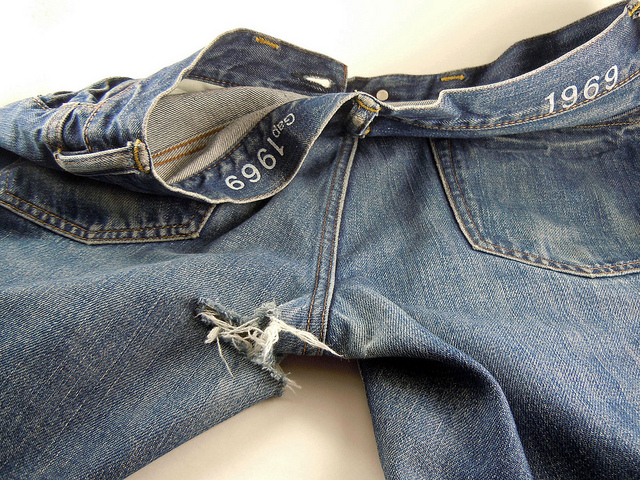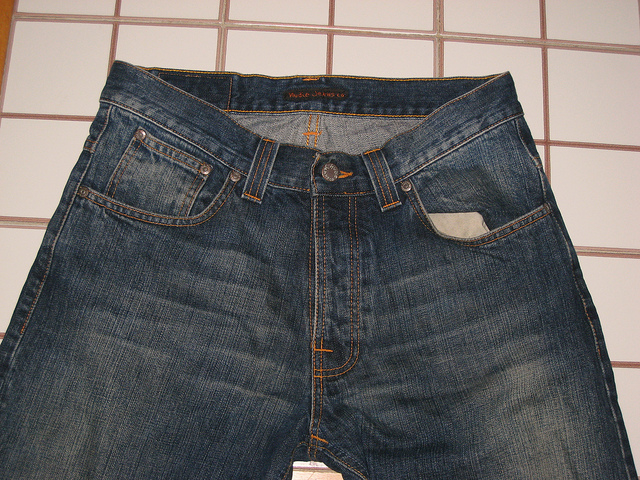A good pair of jeans can last a lifetime — well, almost a lifetime. It’s not uncommon for premium, all-denim jeans to last for 5+ years, which is pretty impressive to say the least. This is largely because of the unmatched strength and durability associated with high-quality denim. However, even high-quality jeans may succumb to wear and tear. If you’re looking to get the most bang for your buck, keep reading to learn some of the most common ways that jeans are damaged. By familiarizing yourself with them, you can take preventive measures to protect your jeans and prolong their overall life.
Left in the Washing Machine
What’s wrong with leaving your jeans in the washing machine? Assuming they’ve already finished washing, you should remove them ASAP, transferring them over to the clothes dryer. Failure to remove your jeans from the washing machine in a timely manner could damage them. The excess water will remain saturated in the denim fibers, promoting the growth of mildew and mold — two things that you don’t want to find on your favorite pair of jeans1. Thankfully, this type of damage is easily prevented by removing your jeans from the washing machine in a timely manner. Once they are finished washing, go ahead and move them over to the dryer.
Washing with Other Colors
Another mistake that many people make with their jeans is washing them with other, non-matching colors. It only takes a couple minutes to separate your dirty laundry by color, but doing so will protect and preserve the color, preventing it from bleeding onto other garments or vise-versa. If you wash a pair of indigo-colored jeans with a red shirt, for instance, you ma discover your jeans have a bright, reddish-pinkish tone when they get out of the washing machine. As you may already know, this phenomenon is attributed to the red dye from the shirt leaching into the denim fibers of the jeans. To prevent this from happening, always wash your jeans with similar colors. If you don’t have any other garments in the same color that need washing, wash your jeans by themselves.
Worn Areas of ‘Distress’
There’s nothing wrong with choosing (or wearing) distressed denim jeans. On the contrary, distressed jeans have become a popular choice in mainstream fashion, worn by both men and women alike. They are characterized by the presence of frayed denim fabric, usually found in the knees and thighs. Assuming you own or plan to own a pair of distressed denim jeans, you should use caution to ensure these areas of distress don’t become further damaged. Conventional wisdom should tell you that frayed knees in a pair of jeans are more likely to catch and become damaged. Granted, you can still wear distressed jeans, but you should remain conscious of their level of distress. If you see the knees become worn down and the fabric breaking — more so than what the manufacturer intended — you should give them a little TLC to prevent further damage.
Low-Quality Denim
Of course, another way in which jeans are damaged involves low-quality denim. Denim itself is highly durable and able to withstand constant wear. However, this doesn’t necessarily mean that it’s indestructible. On the contrary, some manufacturers use low-quality denim to cut corners and save money. These jeans are ultimately more prone to damage due to this flaw. So if you want your jeans to last, it’s best to choose high-quality denim over its low-quality counterpart. You can shop through one of the largest selections of high-quality denim jeans at unbeatable prices by clicking here.
Dragging Bottom on Floor
I think we’ve all been guilty of this at some point: allowing the bottom of your jeans to drag on the floor. Even if they are made of the highest quality denim on the planet, this will ultimately degrade and damage your jeans. This isn’t something that happens overnight. Rather, it takes several times before you’ll notice any visible damage done to your jeans. Nonetheless, you should err on the side of caution by never allowing your jeans to drag on the floor. If you are wearing sandals or flip-flops, choose a pair of jeans that do not extend past your ankles. And if you don’t have any jeans that fall under this category, roll up the bottom so they don’t reach the ground. The bottom line is that you have to keep the bottom of your jeans off the ground to prevent damage.
Stains
We can’t talk about the common ways in which jeans are damaged without mentioning stains. Maybe you accidentally spilled your morning coffee, or perhaps you fell into a puddle while walking to your car. Regardless, stains are bound to happen — and that’s okay. The key thing to remember is that you can clean and remove most stains, assuming they are still fresh. The longer a stain has sat on your jeans, the harder it will be to remove. This is why you should clean stains on your jeans as soon as you see them. So, what’s the best way to clean a stain on denim jeans? Always check the care label beforehand, although you can typically spot clean stains using just a small amount of liquid laundry detergent. Simply pour a very small amount of detergent directly on the stain, and then gently rub and blot the area using a clean washcloth. This should make easy work of minor-to-moderate stains, leaving you with a clean pair of jeans afterwards.
Wrong Size
You might be surprised to learn that wearing jeans that are either too big or too small can lead to damage. When jeans are too small, you could stress the fabric, potentially causing it to break in certain areas. On the other hand, oversized jeans are also prone to damage, as the excess, baggy fabric may drag on the ground (like we mentioned earlier). To prevent this from happening, only wear jeans that are properly fitted for your body. If they are too small or too big, choose a different pair.












